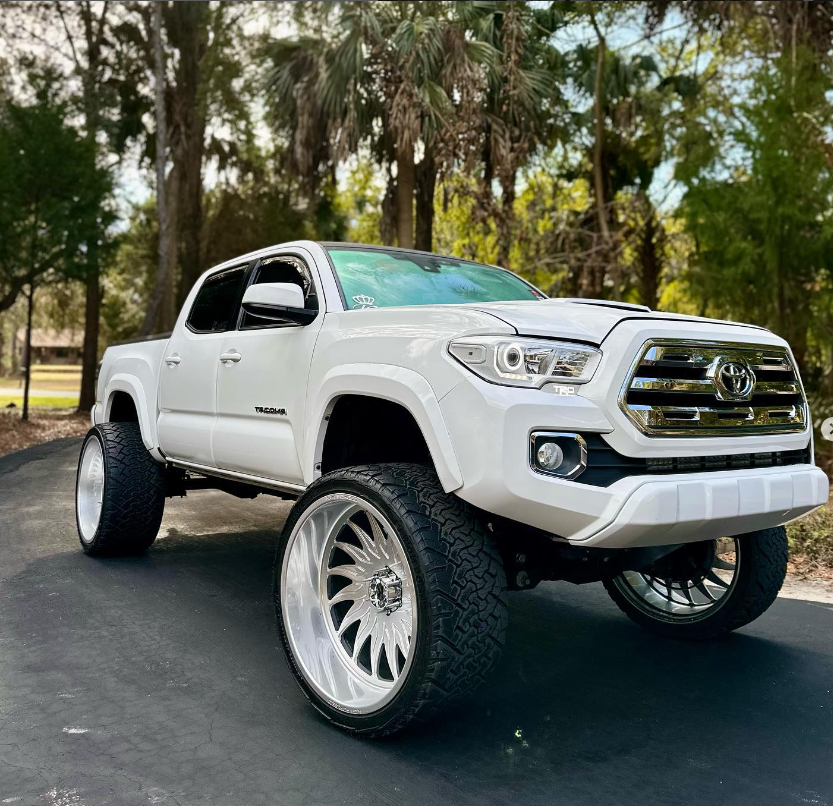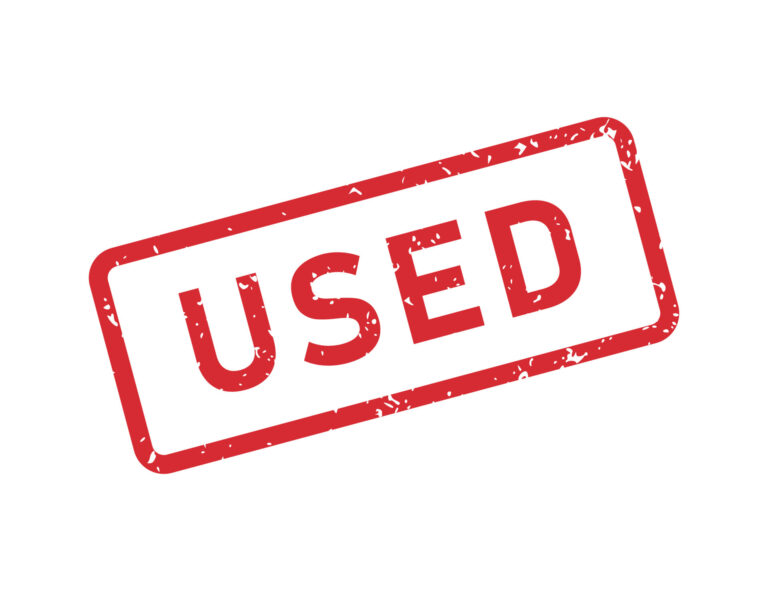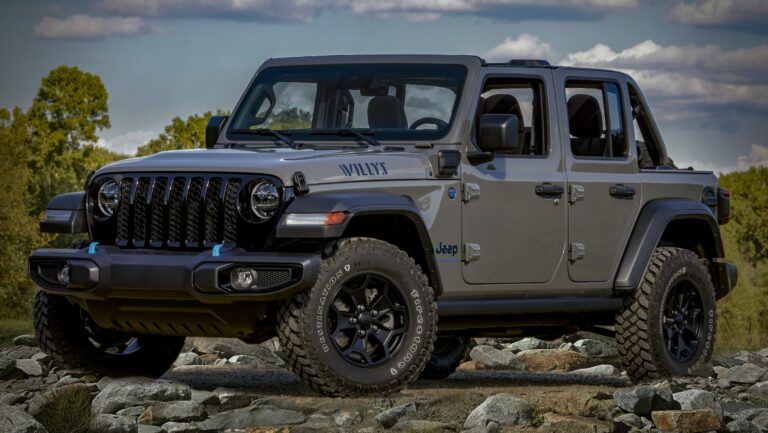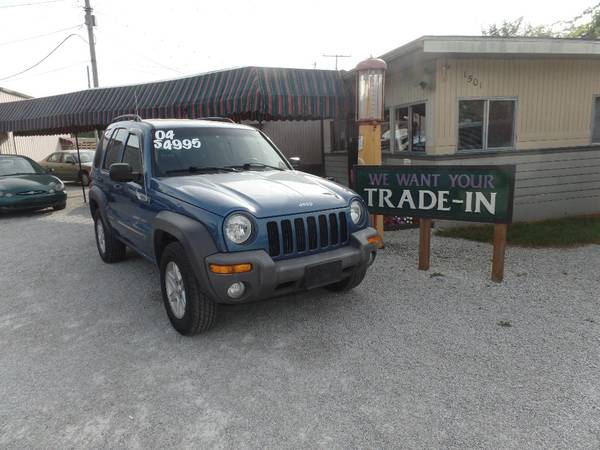Lifted Jeep XJ For Sale: Your Ultimate Guide to Off-Road Glory
Lifted Jeep XJ For Sale: Your Ultimate Guide to Off-Road Glory jeeps.truckstrend.com
The Jeep Cherokee XJ, produced from 1984 to 2001, holds a revered place in automotive history. Far from being just another SUV, the XJ carved out a niche as a rugged, capable, and immensely versatile vehicle, equally at home on city streets as it was conquering demanding off-road trails. Today, despite being out of production for over two decades, the demand for these iconic machines, particularly those that have been "lifted," remains incredibly strong. A "lifted" Jeep XJ refers to a vehicle that has had its suspension modified to increase ground clearance, allowing for larger tires and significantly enhancing its off-road capabilities and aggressive aesthetic. This article serves as a comprehensive guide for anyone looking to enter the world of these legendary 4x4s, exploring why they’re so sought after, what to look for, and how to navigate the buying process for a lifted Jeep XJ.
Why Choose a Lifted Jeep XJ? The Enduring Appeal
Lifted Jeep XJ For Sale: Your Ultimate Guide to Off-Road Glory
The allure of a lifted Jeep XJ extends far beyond its utilitarian roots. It’s a vehicle that embodies adventure, freedom, and a timeless design that continues to turn heads.
Unparalleled Off-Road Prowess
The XJ’s success off-road is no accident. Its unibody construction, while initially met with skepticism, proved remarkably rigid and durable. Coupled with solid front and rear axles (DANA 30 front, DANA 35 or 44 rear), the XJ offers excellent articulation and strength, making it a formidable contender on the trails. Lifting the suspension further amplifies these capabilities, providing increased ground clearance to navigate obstacles, improved approach and departure angles, and the space to fit larger, more aggressive off-road tires.
Modifiability and Aftermarket Support
One of the XJ’s greatest strengths is the sheer volume of aftermarket parts and modifications available. Whether you’re looking for a mild 2-inch lift for better looks and light trail use or a radical 6-inch long-arm setup for extreme rock crawling, the options are virtually limitless. This extensive support means that parts are relatively easy to find and often more affordable than for newer vehicles, making the XJ a dream for DIY enthusiasts and custom builders alike.
Cost-Effectiveness
Compared to modern 4x4s with similar capabilities, a lifted Jeep XJ often represents incredible value. The initial purchase price is typically much lower, and the cost of ownership, including parts and maintenance, can be significantly less. This affordability makes it an accessible entry point into the world of serious off-roading for many enthusiasts.
Classic Status and Aesthetics

The XJ’s boxy, no-nonsense design has aged remarkably well. It exudes a rugged, utilitarian charm that stands in stark contrast to the often overly styled SUVs of today. A lift kit, coupled with chunky tires, accentuates these lines, giving the XJ an imposing and purposeful stance that is instantly recognizable and deeply appealing.
Understanding Lift Kits for the XJ
Before buying, it’s crucial to understand the different types and components of lift kits commonly found on XJs. The quality and type of lift significantly impact performance, safety, and longevity.
Types of Lift Kits
- Spacer Lifts (Budget Boosts): These involve spacers above the coil springs and longer shackles or "add-a-leafs" for the rear. They offer minimal lift (typically 1-2 inches) and are the most affordable but don’t improve suspension articulation or ride quality.
- Short Arm Lift Kits (2-4.5 inches): These replace coil springs, leaf springs, and shocks, often including new control arms and a track bar. They provide a noticeable lift and improve off-road capability without major modifications to the driveline.
- Long Arm Lift Kits (4.5+ inches): Designed for serious off-roading, long arm kits replace the factory short control arms with much longer ones, relocating their mounting points. This significantly improves suspension geometry, reducing control arm angles and enhancing articulation and ride quality, especially on rough terrain. They often require a slip yoke eliminator (SYE) and a new driveshaft to correct driveline angles.

Key Components of a Quality Lift

A proper lift isn’t just about taller springs. Look for:
- Matching Coils and Leaf Springs: Designed for the desired lift height and vehicle weight.
- Performance Shocks: Tuned for the specific lift height and intended use (street, off-road).
- Adjustable Control Arms: Crucial for setting proper caster angles and preventing "death wobble."
- Adjustable Track Bar: Centers the front axle under the vehicle.
- Extended Brake Lines: Necessary to prevent stretching or breaking under full suspension droop.
- Transfer Case Drop Kit or SYE/CV Driveshaft: To correct driveline angles and prevent vibrations, especially on lifts over 3 inches.
- Sway Bar Disconnects: For increased articulation off-road.
What to Look for When Buying a Lifted Jeep XJ
Buying a lifted XJ requires a keen eye and a thorough inspection. Many have been used hard, and the quality of the lift installation can vary wildly.
Rust is the Enemy
The XJ is notorious for rust, especially in regions that use road salt. Inspect critical areas thoroughly:
- Frame Rails: Check under the doors and along the entire length.
- Floorboards and Rocker Panels: Look for soft spots or obvious patches.
- Rear Quarter Panels: Particularly around the wheel wells.
- Unibody Stiffeners: If installed, check their integrity.
Mechanical Condition
Beyond the lift, the underlying vehicle must be sound.
- Engine (4.0L I6): The venerable 4.0L is robust but check for common issues: oil leaks (especially rear main seal), cooling system health (cracked heads on early 00-01 models, cooling fan operation, radiator condition), and overall performance.
- Transmission (AW4 Automatic/AX15 Manual): Check for smooth shifting, fluid leaks, and proper engagement.
- Axles: Listen for grinding or humming noises, indicating worn gears or bearings. Check U-joints on the driveshafts and axles.
- Steering & Suspension: Look for excessive play in the steering wheel, worn tie rod ends, ball joints, and steering box. These can contribute to "death wobble."
- Brakes: Ensure good pedal feel and no excessive pulsation.
Quality and Installation of the Lift Kit
This is paramount. A poorly installed lift can be dangerous and costly to fix.
- Reputable Brands: Does the lift kit use components from well-known manufacturers (e.g., Rubicon Express, Old Man Emu, Iron Rock Off Road, Clayton Off Road)?
- Complete Kit: Are all necessary components present (shocks, springs, control arms, track bar, extended brake lines, SYE if applicable)?
- Proper Angles: Check driveline angles for excessive steepness. Look for vibrations during the test drive.
- Weld Quality: If custom fabrication or long arms are involved, inspect welds for integrity.
- Alignment: Ask if a post-lift alignment was done. Uneven tire wear can be a sign it wasn’t.
Previous Use and Records
Ask about the vehicle’s history. Was it a dedicated trail rig, a daily driver, or a show truck? Look for evidence of hard use like scraped skid plates, dented differentials, or excessive body damage. Request maintenance records and receipts for the lift kit and any major repairs.
The Buying Process: Tips for a Smooth Transaction
Research and Budgeting
Understand the market value for XJs in your area and condition. Set a realistic budget that includes not just the purchase price, but also potential immediate repairs, maintenance, and insurance.
Test Drive
A comprehensive test drive is non-negotiable.
- On-Road: Check for vibrations, steering wander, "death wobble," brake performance, and transmission shifting.
- Off-Road (if possible and safe): If the seller permits, a light trail or uneven terrain can reveal suspension noises, articulation issues, and 4WD engagement problems.
Pre-Purchase Inspection (PPI)
Strongly consider having a trusted mechanic (ideally one familiar with lifted 4x4s) perform a PPI. They can spot issues you might miss and provide an unbiased assessment of the vehicle’s true condition.
Negotiation and Paperwork
Be prepared to negotiate based on your inspection findings. Once agreed upon, ensure the title is clear and that all necessary paperwork is completed for a legal transfer of ownership.
Potential Challenges and Solutions
Owning a lifted XJ comes with its unique set of challenges, but most have well-known solutions.
- "Death Wobble": This violent shaking of the front end, usually at highway speeds after hitting a bump, is common in lifted Jeeps. It’s almost always caused by worn or misaligned steering/suspension components (track bar, control arms, ball joints, tie rod ends). A proper diagnosis and replacement of worn parts usually resolves it.
- Increased Wear on Components: Lifting changes geometry, which can accelerate wear on U-joints, ball joints, and steering components due to increased angles and stress. Regular maintenance and inspection are key.
- Reduced Fuel Economy: Larger tires and increased aerodynamic drag will inevitably lead to lower MPG.
- Insurance: Some insurance companies may charge more for modified vehicles or require declarations of modifications. Inform your insurer.
- Finding Parts: While abundant, some specific trim pieces or unique OEM parts for older XJs might become harder to source. However, the aftermarket is robust for mechanical components.
Lifted Jeep XJ For Sale: Estimated Price Guide
The price of a lifted Jeep XJ can vary wildly based on year, mileage, condition, the quality and extent of the lift and other modifications, and geographic location. This table provides a general guide.
| Category | Year Range | Condition Description | Lift Type/Size | Key Features/Notes | Estimated Price Range (USD) |
|---|---|---|---|---|---|
| Budget-Friendly | 1984-1996 | High mileage (180k+), visible rust, basic lift, needs TLC | 2-3" Spacer or Add-a-Leaf | Often a project vehicle, suitable for those with mechanical skills. | $3,000 – $6,000 |
| Mid-Range | 1997-2001 | Moderate mileage (120k-180k), some minor rust/dents, decent interior | 3-4.5" Short Arm (Coil/Leaf replacement) | Well-maintained, daily drivable, good starting point for further mods. | $6,500 – $12,000 |
| Premium/Built | 1997-2001 | Lower mileage (under 120k), minimal rust, excellent condition | 4.5"+ Long Arm or High-Quality Short Arm | Extensive mods (lockers, re-geared axles, armor), professionally built, turn-key trail rig. | $12,500 – $25,000+ |
| Restored/Collector | Any Year | Showroom quality, fully restored, custom build, rare specs | Custom or Period-Correct Lift (any size) | Immaculate condition, unique features, low production numbers, highly desirable. | $20,000 – $40,000+ |
Note: These are estimates and market conditions can cause significant fluctuations. Always inspect the vehicle thoroughly before purchase.
Frequently Asked Questions (FAQ)
Q: Is a lifted XJ a good daily driver?
A: Yes, many lifted XJs are daily driven, especially those with 2-4.5 inch lifts. However, ride quality will be firmer, fuel economy lower, and maintenance may be more frequent than a stock vehicle. Larger lifts (6"+) can make them less practical for daily commuting.
Q: What’s the best engine for an XJ?
A: The 4.0L inline-six (I6) is universally considered the best and most reliable engine for the XJ. It offers excellent torque for off-roading and is known for its longevity if properly maintained.
Q: What’s "Death Wobble" and how do I fix it?
A: "Death Wobble" is a violent, uncontrolled oscillation of the front wheels, usually triggered by hitting a bump at speed. It’s caused by worn or loose steering and suspension components (track bar, ball joints, tie rod ends, control arm bushings). Fixing it involves diagnosing and replacing the worn parts, ensuring proper alignment, and sometimes upgrading components.
Q: How much does it cost to lift an XJ?
A: The cost of a lift kit alone can range from a few hundred dollars for a basic spacer lift to several thousand for a high-quality long-arm kit. Professional installation can add another $500-$1500+.
Q: What are common rust spots on an XJ?
A: Common rust spots include the frame rails (especially near the front control arm mounts and rear leaf spring mounts), rocker panels, floorboards, rear quarter panels around the wheel wells, and the area under the rear cargo carpet.
Q: Are parts readily available for the XJ?
A: Yes, parts availability for the Jeep XJ is excellent. Due to its popularity and long production run, both OEM and aftermarket parts are widely available through various online retailers, specialized Jeep shops, and local auto parts stores.
Conclusion
The lifted Jeep XJ remains an icon for a reason. It offers an unparalleled blend of classic rugged aesthetics, genuine off-road capability, and an enduring platform for customization, all at a price point that makes it accessible to a wide range of enthusiasts. While the journey of finding the right lifted XJ requires careful inspection and an understanding of its unique characteristics, the reward is a vehicle that promises adventure, camaraderie, and a deep connection to the legendary Jeep heritage. By arming yourself with knowledge and patience, you can confidently navigate the market and find the perfect lifted Jeep XJ to embark on your next off-road odyssey.






